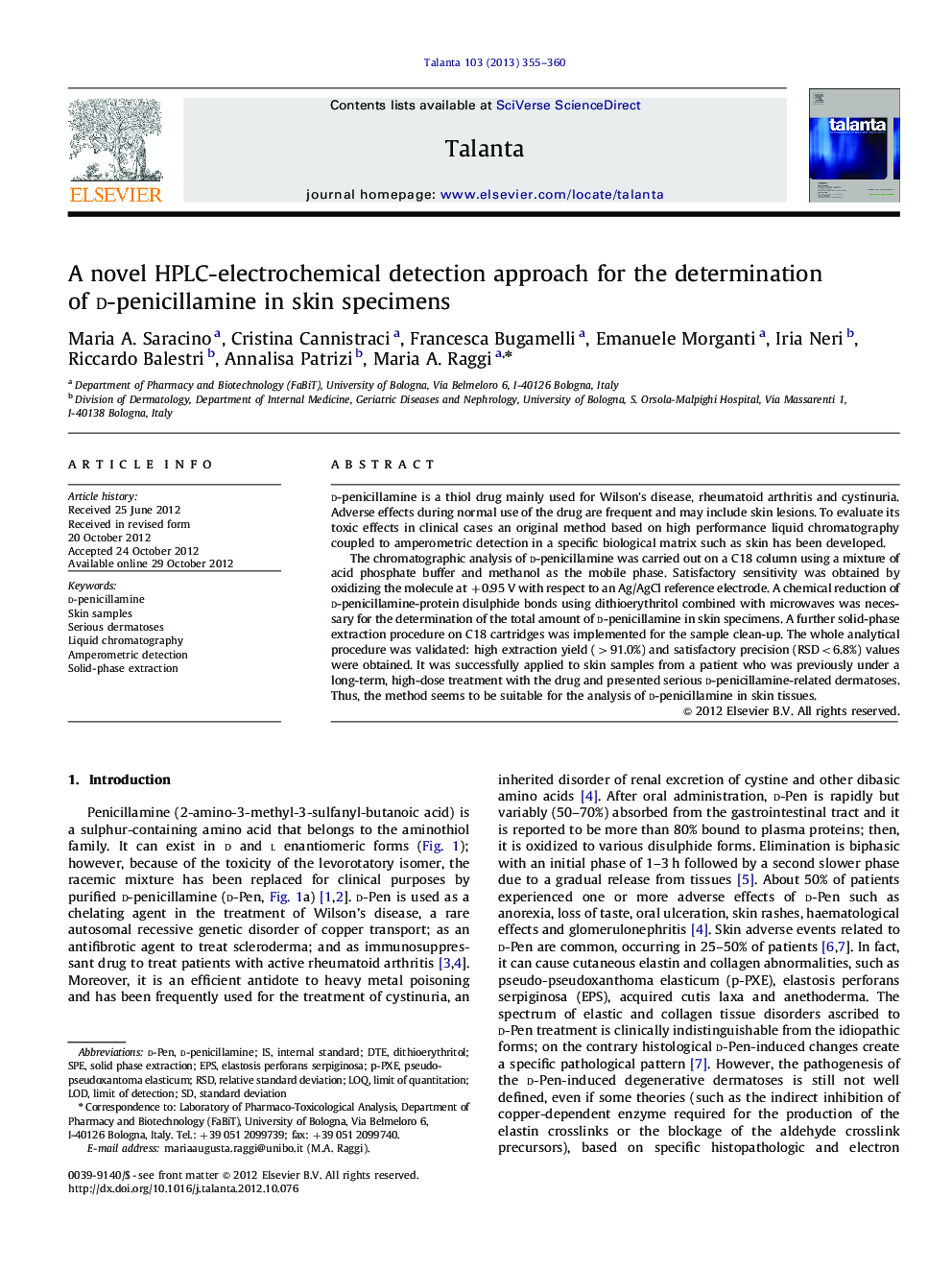| Article ID | Journal | Published Year | Pages | File Type |
|---|---|---|---|---|
| 1242941 | Talanta | 2013 | 6 Pages |
d-penicillamine is a thiol drug mainly used for Wilson's disease, rheumatoid arthritis and cystinuria. Adverse effects during normal use of the drug are frequent and may include skin lesions. To evaluate its toxic effects in clinical cases an original method based on high performance liquid chromatography coupled to amperometric detection in a specific biological matrix such as skin has been developed.The chromatographic analysis of d-penicillamine was carried out on a C18 column using a mixture of acid phosphate buffer and methanol as the mobile phase. Satisfactory sensitivity was obtained by oxidizing the molecule at +0.95 V with respect to an Ag/AgCl reference electrode. A chemical reduction of d-penicillamine-protein disulphide bonds using dithioerythritol combined with microwaves was necessary for the determination of the total amount of d-penicillamine in skin specimens. A further solid-phase extraction procedure on C18 cartridges was implemented for the sample clean-up. The whole analytical procedure was validated: high extraction yield (>91.0%) and satisfactory precision (RSD<6.8%) values were obtained. It was successfully applied to skin samples from a patient who was previously under a long-term, high-dose treatment with the drug and presented serious d-penicillamine-related dermatoses. Thus, the method seems to be suitable for the analysis of d-penicillamine in skin tissues.
► Combined HPLC-amperometric detection and SPE method. ► First report on the determination of d-Pen in skin samples. ► Use of microwave-assisted DTE reduction of skin d-Pen-protein disulphides. ► Application to a patient with d-Pen-associated skin diseases (EPS and p-PXE).
